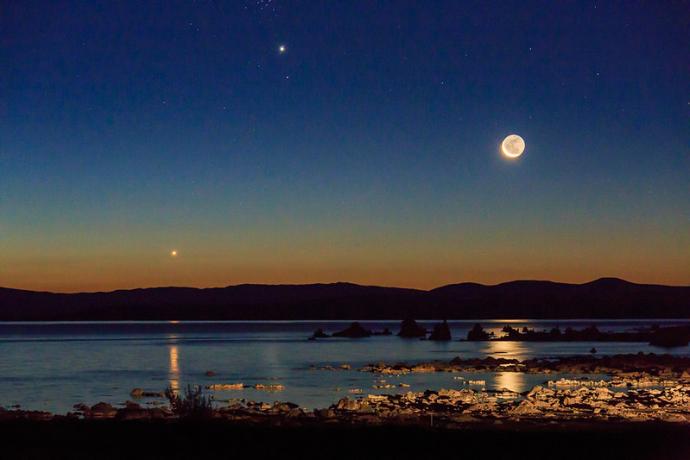After the invention of the telescope, everything changed for astronomers. They were now able to see many more objects in the night sky. These faint objects were either small, or far away, or both! They were also able to view planets and moons in more detail.
Early astronomers knew of 5 planets beyond Earth. These were Mercury, Venus, Mars, Jupiter, and Saturn. These are the 5 planets you can see yourself with the naked eye.

In 1781, William Herschel became the first person in thousands of years to discover a planet. He used a telescope he had built himself and found the 7th planet, Uranus. A few years' later in 1845, Neptune was found by both British and French astronomers. Both groups had watched the orbit of Uranus and used their data to predict there was an 8th planet. They worked out where it would be and when they looked, there it was!
In 1655, Christiaan Huygens viewed Saturn. He was also using a telescope he had built himself. Huygens was the first to see that this giant planet had a thin, flat ring. He also found Saturn's largest moon, Titan.
From 1930 to 2006, there were 9 planets in our Solar System. The 9th planet, Pluto had been predicted in 1905 by Percival Lowell and was found 25 years' later. However, in 2005, astronomers discovered Eris. and several other small, rocky objects. They were all in the area of space out past the orbit of Neptune. This led to a new category of object called 'dwarf planet'. In 2006, Pluto joined Eris as a dwarf planet. The Solar System had 8 planets once again.
In 1680, Edmund Halley saw a comet in the night sky. Using the data he collected, he worked out when its orbit would bring the comet back near to Earth. Edmund was shown to be correct and the comet is now known as Halley’s comet.
In 1801, the first asteroid was found and named Ceres. Less than two years later, another asteroid, Pallas was found. We now know there are more than 100,000 asteroids between the orbits of Mars and Jupiter. This area of space has been known as the ‘asteroid belt’ since the 1850s. Like Pluto, Ceres became part of the 'dwarf planet' group in 2006 and is no longer known as an asteroid.
